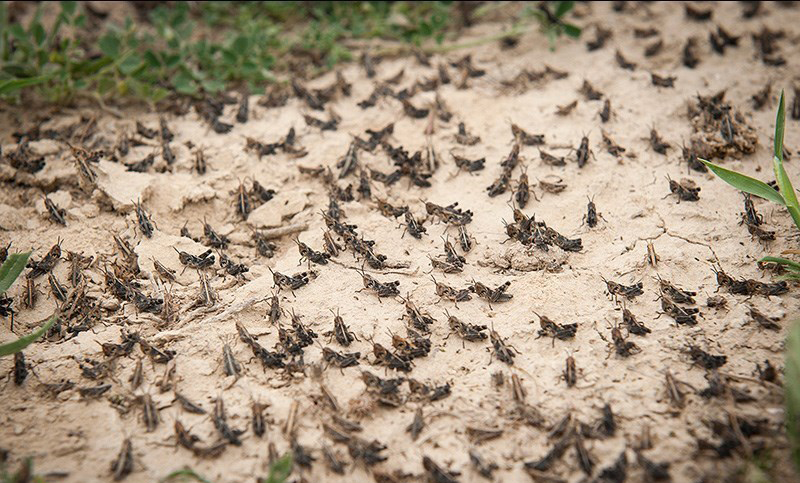Locusts’ invasion of 6,000 hectares of Hamoun County in Sistan-Baluchestan Province and its wetlands has come to an end, according to a provincial official.
Since late August, a swarm of locusts came from across the Afghanistan’s borders to the Hamoun Wetlands in Sistan—a more suitable habitat—due to the prolonged drought in the neighboring country.
Three teams began implementing countermeasures on September 5. Mohammad Ali Piri, the governor of Hirmand County just north of the wetlands, says the teams have covered over 6,000 hectares with pesticides, IRNA reported.
“The pests have been eradicated thanks to the teams’ efforts and no farmland was harmed,” said.
“The area that had been besieged is now cleared of insects, but the teams will continue their work to ensure total eradication.”
Piri noted that the pesticide used in the mission only targets locusts and poses no danger to other species.
Co-organized by Iran Plant Protection Organization and the provincial office of Agriculture Ministry, the plan is supposed to continue to cover 13,000 hectares to guarantee that the area is cleared of the insects.
Hamouns are trans-boundary wetlands on the Iran-Afghanistan border and constitute three lakes: Hamoun-e Helmand, which is entirely in Iran; Hamoun-e Sabari on the border; and Hamoun-e Puzak, which is almost entirely inside Afghanistan.
The three lakes are linked and fed by water from Afghanistan’s Helmand River. Therefore, given the water discharge from Helmand, the general weather condition is different for each.


